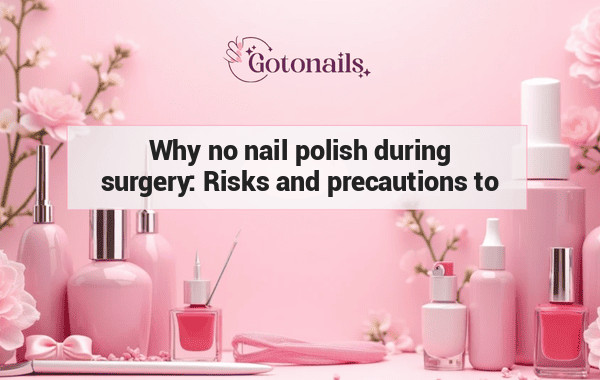
Why no nail polish during surgery: Risks and precautions to consider
Nail polish must be removed before surgery for crucial medical reasons. Gotonails always recommends following your doctor's advice to ensure your health and safety. Find out why this simple step is so important.
Key Takeaways: Removing nail polish before surgery is critical because it allows medical staff to monitor oxygen levels accurately and detect complications early. Your nails can show signs of oxygen depletion, so clear visibility is essential for your safety.
Why You Shouldn’t Wear Nail Polish During Surgery
When preparing for surgery, you’ll likely receive a checklist of things to do beforehand. Removing nail polish is a common request on that list, and for good reason. Medical teams need to keep an eye on several things during your surgery, including your oxygen levels. Here’s why that small bottle of nail polish is such a big deal.
Pulse Oximeters Need Clear Nails
During surgery, one of the key devices used is a pulse oximeter, which measures your blood’s oxygen saturation. The device is typically clipped to your fingertip, where it uses light to penetrate through the nail and skin. If there’s nail polish, especially dark colors, it can interfere with the oximeter’s readings, leading to inaccurate measurements of oxygen levels. This can be dangerous, as your oxygen levels are critical during surgery.
Identifying Oxygen Deprivation
Besides medical devices, your body also gives visual clues about your well-being. In particular, your nails can show signs of oxygen deprivation. When oxygen levels are too low, your nails may turn blue, a condition known as cyanosis. If your nails are covered in polish, this early warning sign could go unnoticed. That’s why medical staff will ask you to remove any polish before your operation—it’s about making sure they can spot any issues right away.
Infection Control and Hygiene
While monitoring oxygen levels is the main reason behind removing nail polish, it’s not the only one. Surgery requires a sterile environment to prevent infections. Nail polish can harbor bacteria, which may introduce harmful germs into the operating room. Even though gloves are worn during procedures, having clean, unpolished nails reduces the risk of contamination. Gotonails emphasizes the importance of good nail hygiene in all medical settings.
The Role of Nail Polish in Surgery Preparation
Preparing for surgery involves many steps, and each is designed to ensure your procedure goes smoothly. Nail polish may seem like a small thing to worry about, but it plays a surprisingly large role in patient safety.
Why Medical Protocols Matter
Medical teams have strict protocols in place to ensure the best possible outcomes. Removing nail polish may seem insignificant compared to other pre-surgery preparations like fasting or filling out paperwork, but it’s a vital step. Following these guidelines is part of the larger picture of maintaining a sterile, safe environment.
Nail Polish and Sterility
Sterility in the operating room is paramount. Every item, from surgical tools to the skin of patients, is carefully cleaned and prepared to minimize infection risk. Although you might not think of your nails as a source of germs, nail polish can hide bacteria, especially if the polish is old or chipped. That’s why medical staff insist on polish-free nails—it’s one less avenue for infection.
Common Questions About Nail Polish and Surgery
Why Can’t I Wear Nail Polish During Surgery?
Wearing nail polish during surgery can interfere with devices like pulse oximeters that measure oxygen levels through your nails. It also prevents medical staff from seeing important visual signs, such as a change in nail color, that indicate oxygen deprivation.
Can Clear Nail Polish Be Worn?
Even clear nail polish can affect how light passes through the nail, which can impact the accuracy of the pulse oximeter’s readings. To be safe, it’s best to have bare nails during surgery, regardless of the polish color.
Do Toenails Matter?
Yes! While fingernails are more commonly checked for oxygen levels, some surgeries may require the use of pulse oximeters on your toes. For this reason, it’s a good idea to remove polish from both your fingernails and toenails.
What About Gel or Acrylic Nails?
Gel and acrylic nails can cause even more significant issues than regular polish, as they are thicker and harder for medical devices to penetrate. These should also be removed before surgery to ensure accurate monitoring of your health.
How Can I Best Prepare My Nails for Surgery?
To ensure a smooth surgical procedure, remove all nail polish or artificial nails ahead of time. Keep your nails clean and free from any products, so the medical team can easily monitor your oxygen levels. If you’re unsure about the best way to prepare, consult with your healthcare provider for guidance.
Conclusion
Removing nail polish might seem like a small step, but it’s crucial for ensuring your safety during surgery. By keeping your nails bare, you enable medical professionals to monitor your oxygen levels and detect any issues early. Always trust in your healthcare provider's guidance, and remember that Gotonails is here to support your journey to better health. Visit Gotonails.org for more information and tips on maintaining nail hygiene before and after surgery.
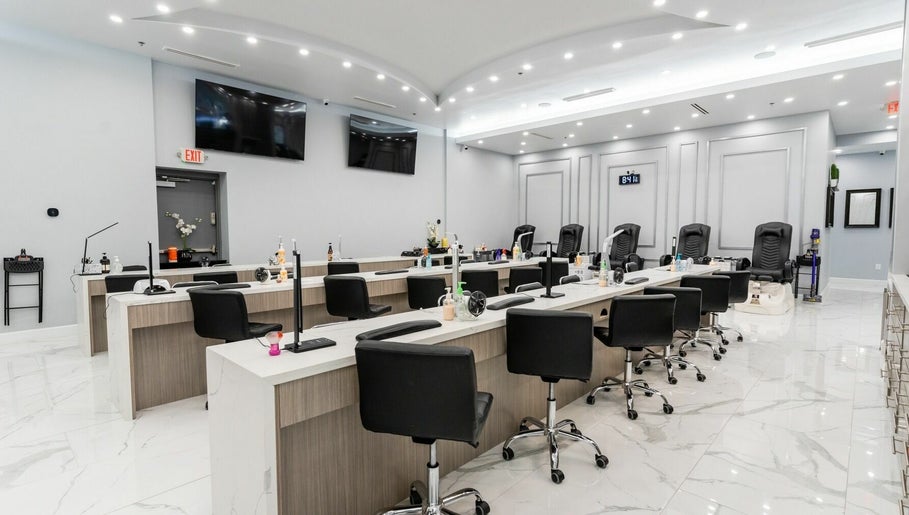
“Discover Cassia Nail Spa, a vibrant salon in Menomonee Falls, WI (53051). Whether it's a repair or a fresh style, our skilled technicians ensure your nails look and feel amazing, guaranteed to catch eyes. With a focus on detail, every client receives exce”
“Racine Nails is a vibrant, yet comfortable nail salon in the heart of the Mount Pleasant/Racine County area. Whether you need a repair or a whole new style, our technicians will give you a look that not only makes you feel great about your nails but will”
“We carry top of the line products Our facility is clean and sanitation is our top priority. All materials are used only once. New tools are provided for each client(s) to accommodate the highest standards for our service(s). Our goal is to make our clie”
“Gloss is the premier Nail Salon in the Hall & Hayes area, offering Hard Gels, Acrylics, and many more trending Nail looks. With an extensive selection, we’ve got you covered for whatever you need. If you need self-love and care, a party or event in your f”

“Deeply attuned to client needs, our team at Shiloh Nails and Spa uses its expertise to provide you with the highest level of services. Choose your service starting from nail enhancements, manicure, pedicure, facial, eyelash extension, or massage to waxing”
“Ruby Nails is a fully licensed nail salon located in the Ruby Isle shopping center. We offer a variety of manicure and pedicure services. It is our goal to provide a friendly and relaxing atmosphere for all our clients. We strive for consistency in ev”
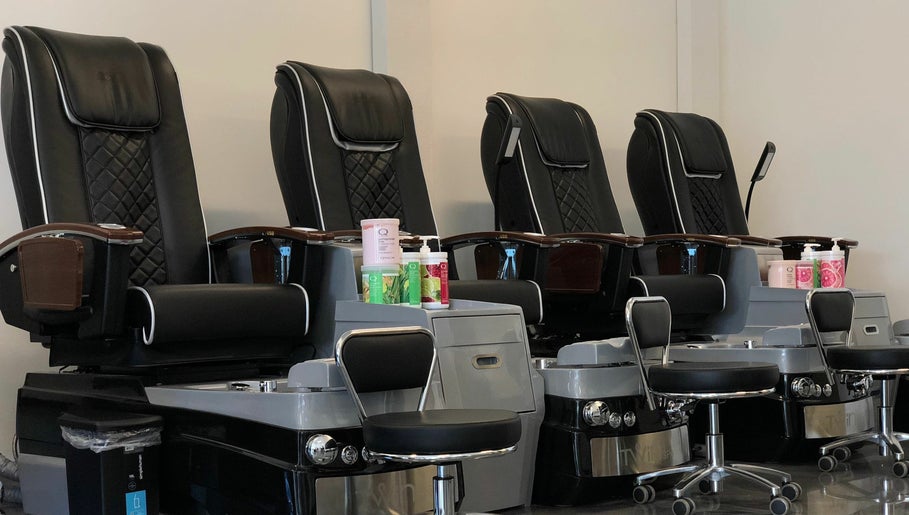
“Vogue Lashes & Spa in Sandbridge, Virginia Beach, features a complete range of services, including the highest quality individual eyelash extensions, lash lifts and tints, eyebrow shaping, permanent makeup, custom facials, bridal makeups, massage therapy,”
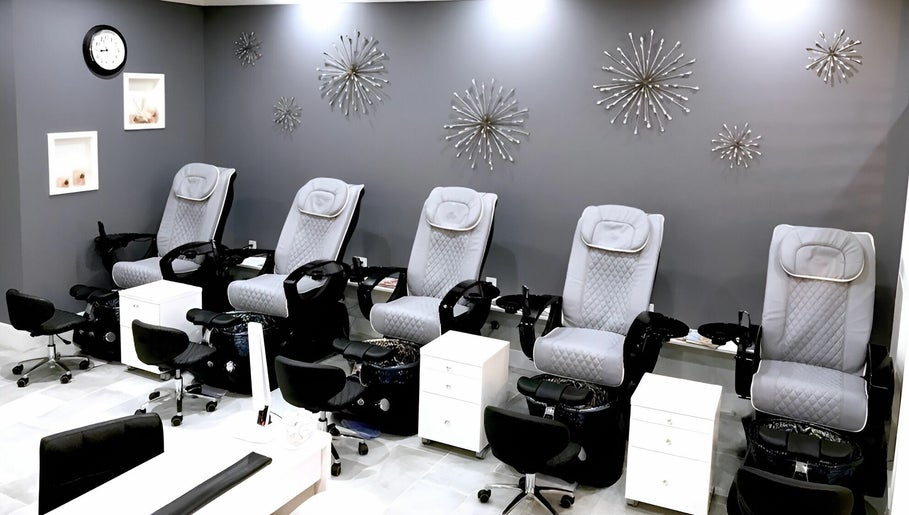
“Located in Columbia, MD, we are situated in the same shopping center as Victoria Gastro Pub. Our salon takes tremendous pride in customer service and customer satisfaction. As one of the top salons in Maryland, we are constantly improving our services to ”
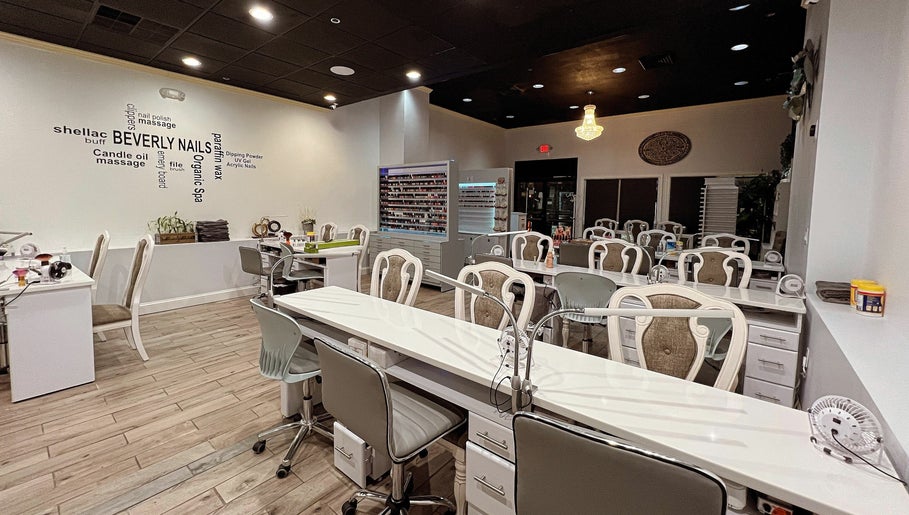
“Indulge all your senses, let go of all of your worries, and get pampered with our exclusive spa services. Beverly Nails & Spa Boutique is located in Beverly, Massachusetts offering a range of beauty services that will enhance your natural beauty. What mak”
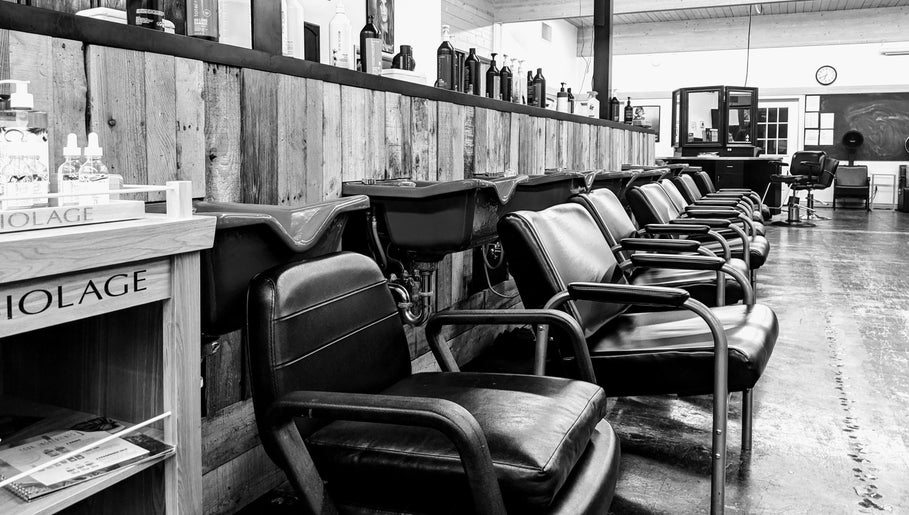
“Welcome to our full-service student salon, where you can experience top-notch services provided by students who have completed the initial phase of their training. Rest assured, all services are meticulously overseen by licensed educators, ensuring the hi”

“Posh Polish Nail Salon is a full-service nail salon located in Westfield, Indiana. We offer a number of services including manicures, pedicures, gel polish, acrylics, waxing and more. Book online with us today through Fresha! Our goal is to make each cli”
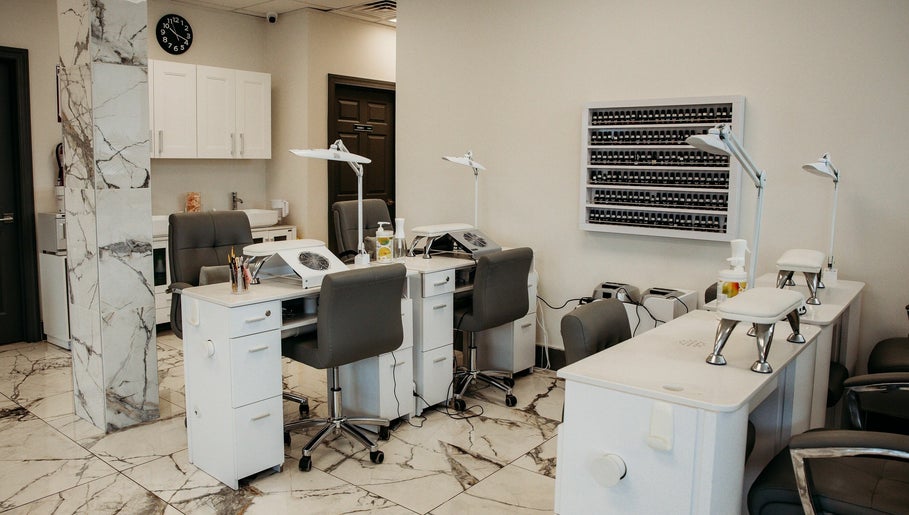
“Discover a sanctuary of beauty and relaxation at Vogue Lashes & Spa. Our certified specialists offer a comprehensive array of premium beauty services, tailored for both women and men. From enhancing your natural beauty with individual eyelash extensions a”

“Hello to Cherry Creek Nail Spa! We truly care about what goes on your nails and your body, so we offer you our best: - Experienced and talented nail technicians. - Nontoxic nail care products. - All natural ingredients, locally make in Colorado skin c”
“ManiCured is a nail salon located in Denver, Colorado. At ManiCured we created a business that would contribute positively back into the community in every way possible! We are one of the few salons who recycle, use eco-friendly products, and dispose of w”
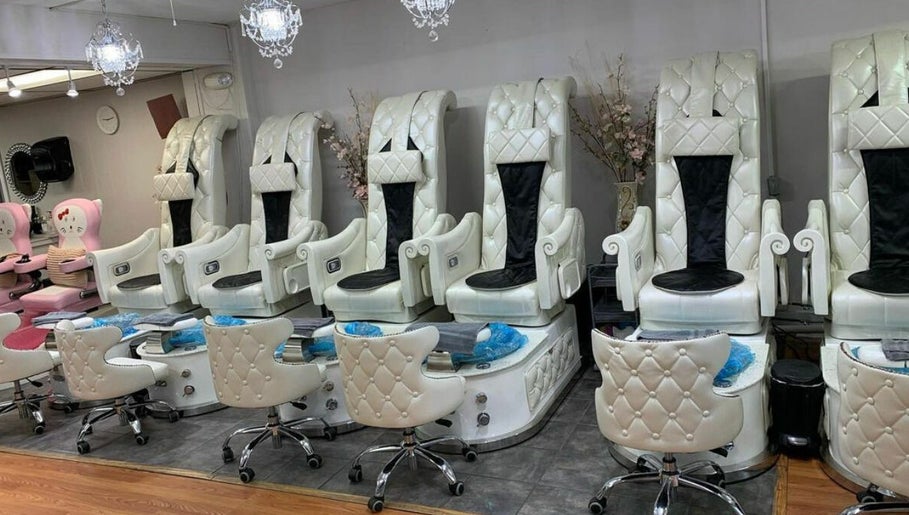
“Serving the Greater Northshore (Essex County Massachusetts) and Greater Beverly Area, we offer manicures, pedicures, and wax services. Our top priority is your comfort and satisfaction. We strive to cater to your needs to where our service exceeds your e”
“We are a local salon focused on beauty, art, and supporting our community. Our staff is dedicated to providing a safe space for all clients; as a Dress Code Project partner our salon believes that everyone deserves self-care, no matter their age, gender-i”

“BeeQ Salon Spa, where our mission is to provide an unforgettable experience. With two Ann Arbor locations, our inviting spaces beckon you to unwind in our comfortable salon. Our warm staff attends to your personal care needs, leaving you beautiful inside ”
“Zen Day Spa "Living A Healthier YOU!" is a beautiful spa facility that specializes in Massages(MM#35768), Facials, Manicures, Pedicures, Nails, Foot Reflexology, Waxing, Raindrop Therapy, Chakra Balancing, Body Wraps...and more. If you don’t know which t”
“Hair and Nail Salon for the whole family. We offer a full range of hair & nail services, waxing, spray tanning. We bring many years of experience and a drive to satisfy every client every time. We look forward to having you in our chair!”

“At La Belle Vie Salon and Spa, there is nothing more remarkable than creating a place where individuals feel beautiful, remembered, taken care of and uplifted. To us, that is the optimum experience. We seek to discover, create, and exemplify beauty in e”

“Step in your one-stop beauty shop! At Vogue Lashes & Spa we offer a wide variety of services for both men and women that will make you feel beautiful from head to toe. Our exceptional team of dedicated professionals possess a genuine desire for not only y”

“Bubblicious Nails & Spa LLC is located in Staten Island, NY. Under New Management 06/16/2022 Our spa environment is designed to create the perfect atmosphere for our clients to completely relax and unwind. Tell us what your dream nails are, and we will”
“Here at Etoile Salon, our vision is not only to create a beautiful appearance but to nurture the spirit and relax the body and mind. Our goal is to lift and to challenge current industry standards. We offer a wide range of services and gift packages in wh”
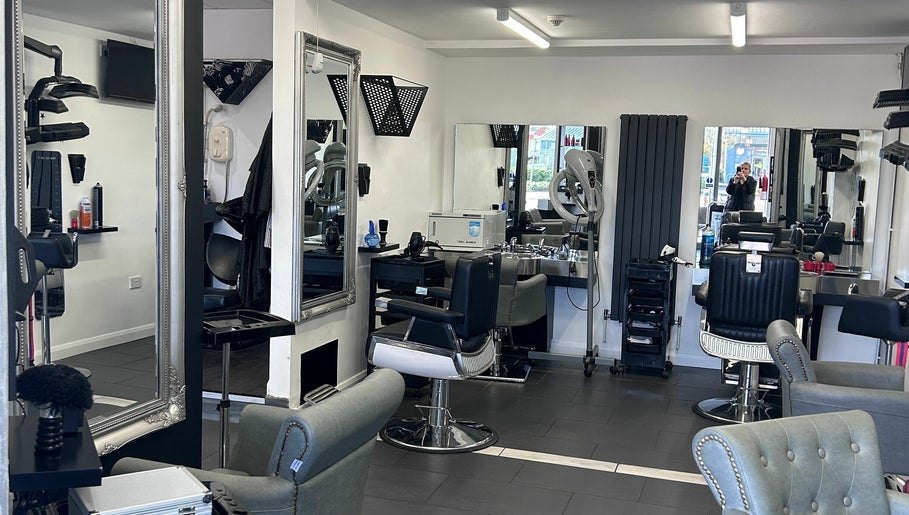
“Ice Hair and Barbers brings quality hair styling & cuts for Women, Men and Children to Kingsway at affordable prices. Our young friendly team keeps up with the latest trends and provides a warm welcome.”

“Cuts ‘N’ Clippers Barbers is a family-run business with over 17 years of experience, dedicated to offering unisex haircuts tailored to your style. Our skilled team of barbers and hairdressers are here to refine your look to perfection. For beauty and male”
“Our skilled team specializes in treatments such as soothing massages, refreshing facials, precise waxing, and expert nail care. Each service is customized to meet your unique needs, ensuring a luxurious and personalized experience. Committed to using high”
“Beautiful, tranquil salon with plenty of free parking. We are massage specialists, including sports, hot stones and aromatherapy. We have holistic therapists who deliver reflexology and Reiki. Plus we offer a fabulous selection of facials including relax”
“Co-founded by session and celebrity manicurist Ama Quashie with salons based in Brixton and Leicester Square. The salon’s ethos is to amplify and accentuate the natural nail in all of its magnificent glory and adaptability. While offering premium traditio”
“Shoreditch Nails is a conscious beauty brand with studios in Shoreditch and Dalston, an Academy, and an eco-friendly polish collection. Our studios are a hub for self-care, creativity and a place for everyone to enjoy. Our Academy is a modern alternative”
“Hair, beauty & tanning salon, open 7 days and 5 late nights in Birtley. Our professional team offers all hair treatments, semi-permanent lashes, waxing, nail extensions and gel nails, manicures and pedicures, as well as a large selection of massage and fa”
“Beautie.LAB - Beauty & Aesthetics salon on New Beckenham High Street. Our mission is to gain your trust and win your loyalty. We are offering a wide range of beauty, nail & aesthetics treatments provided by fully qualified and highly experienced therapist”
“Blush + Blow London was founded by Bridget O’Keeffe, a makeup artist and entrepreneur 2016. She wanted to create a place with excellent customer service, that has great value for money with a fun, unique experience. As an SW6 resident herself, she knew ex”
“Bellissima is a Nail, Beauty and Aesthetic clinic situated in the heart of Hiltingbury Chandler’s Ford. Owned by Emma Marucci, an ambitious, quality-driven perfectionist with a genuine interest in all things beauty. Over the years, Emma has acquired expe”
“The Glow Up Nail Bar offers a full range of The Gel Bottle treatments, extensions, manicures and pedicures. Cruelty-free and vegan products are available at this chic pink Plymouth salon, where you can choose to add nail art for truly individual styled na”

“Shoreditch Nails is a conscious beauty brand with studios in Shoreditch and Dalston, an Academy, and an eco-friendly polish collection. Our studios are hubs for self-care, creativity, and a place for everyone to enjoy. The Academy is a modern alternative ”

“Beauty Salon in Wingham. Located next to Wingham Wildlife Park. Offering Million Dollar Facials, BIAB, Gels, Lash Lift, Brow Lamination, Lash Extensions, Brow Wax & Tint, Lash Tint, Waxing and SPMU Coming Soon! NEW CLIENT? Please make sure to contact you”
“The Avalon Rooms are the brain child of Flik Denham. Flik, one of the UK’s foremost award winning cosmetic and medical tattoo artists and body piercers, decided to open the Avalon Rooms in late 2019 after having sold her previous studio of 11 years. It wa”
“Yütopia spa located on Madeley High Street in the heart of Shropshire. Our Oriental inspired salon is designed with tranquil relaxation in mind. At Yütopia, you can relax the mind, soothe the soul, lift the spirit and escape from the world. Our aim is to”
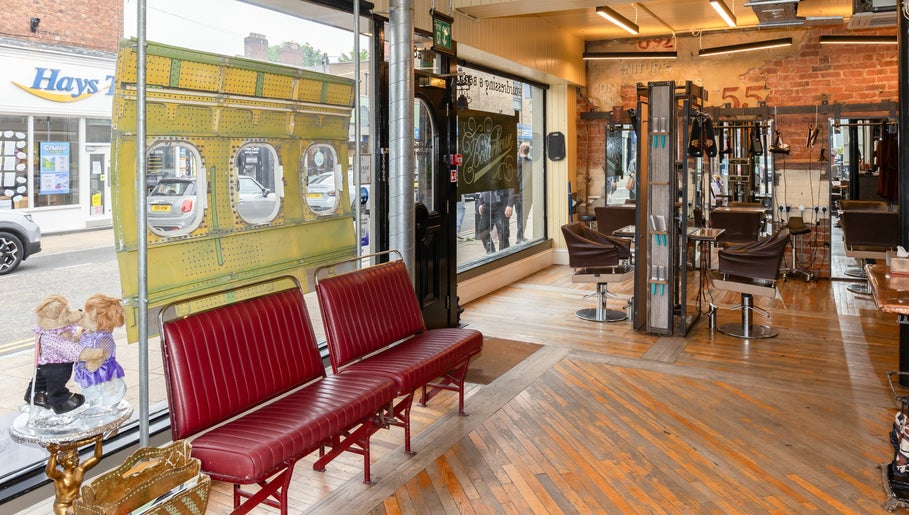
“All our staff are trained in-house, the Boilerhouse way – from the ground up. Our extensive training scheme is complemented by ongoing training to keep the team on top of emerging hairdressing techniques. We strive to provide the highest standard in all ”
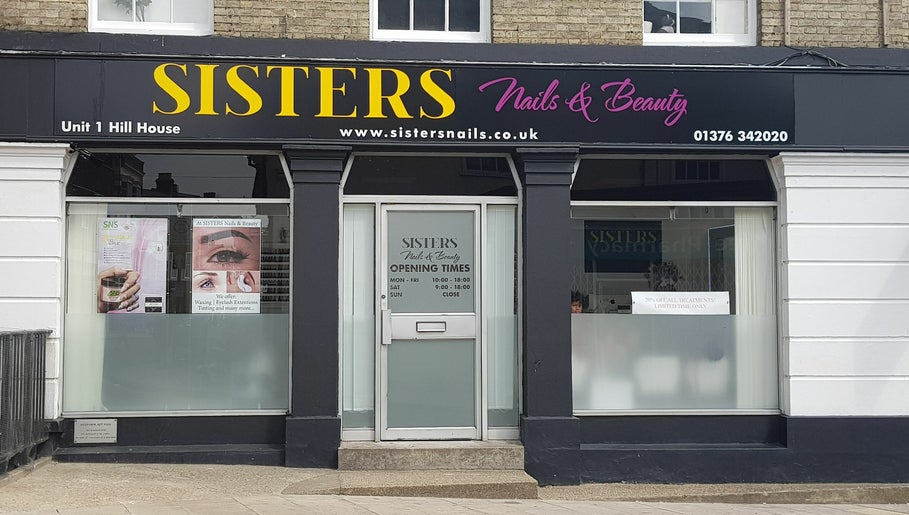
“Discover our esteemed nail salon, nestled in the heart of Braintree, Essex. We take pride in offering a warm and professional atmosphere where exceptional nail care is delivered with a friendly touch. Experience the perfect blend of expertise and hospital”
“From the moment you enter our salon you will experience a friendly, personal service that is second to none. Whether your visit is for the must have beauty essentials, one of our advanced skin care treatments or just muscular tension relief; you can rest ”
“If you're looking for an exclusive salon with a bespoke range of beauty services carried out by experienced beauty therapists, then Image is your answer. We provide top-quality services by our highly trained award winning team, that will leave you feeling”
“E-Nails is located in Waterloo, Huddersfield. The salon specialises in all ranges of nail enhancements including BIAB, Acrylic nails, Builder Gel nails, Shellac along with tinting, waxing, lash extentions, brow lamination, LVL and spray tanning treatmen”
“Vegan and Cruelty Free Nail Studio, Wellness Salon and Infrared Sauna. In pursuit of Wellness, STILL-London has been born. In an age where YOU matter, we bring you clean and toxic free beauty with unparalleled customer service in a calm and relaxing envir”
“Plaster Beauty is a boutique nail & beauty bar, located in the heart of Crystal Palace's Triangle, just a 10-minute walk from Crystal Palace station. This stylish salon opened in June 2019 and specialises in manicures and pedicures using vegan and cruelty”
“The Hair Gallery is a contemporary salon located in Waltham High Street. Our stylists are extensively trained and able to offer expert professional advice, specifically tailored to you. We only use the very best fashion haircare products to complement our”
“Auburn is a beautiful, relaxing salon based in the centre of Barnham in West Sussex. We are here to cater for both female and male clients alike and offer a full, professional range of services from haircutting, styling, barbering and colour services to D”




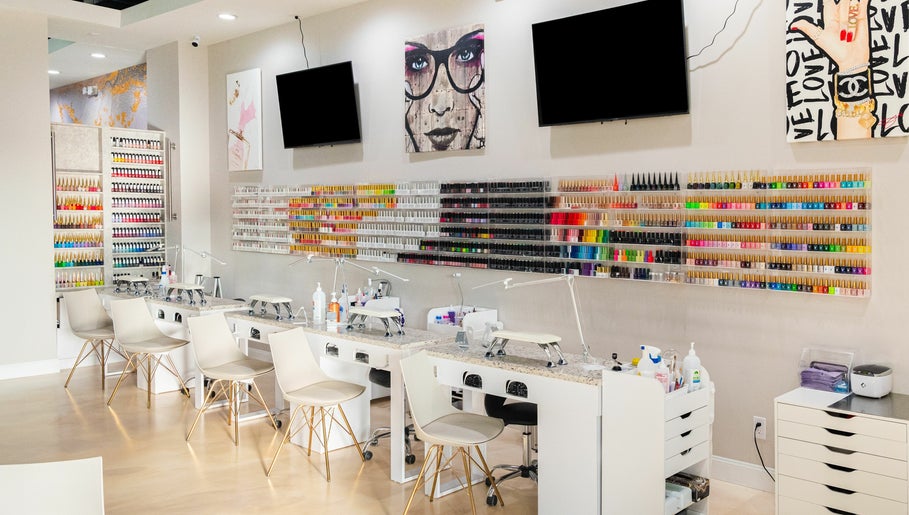








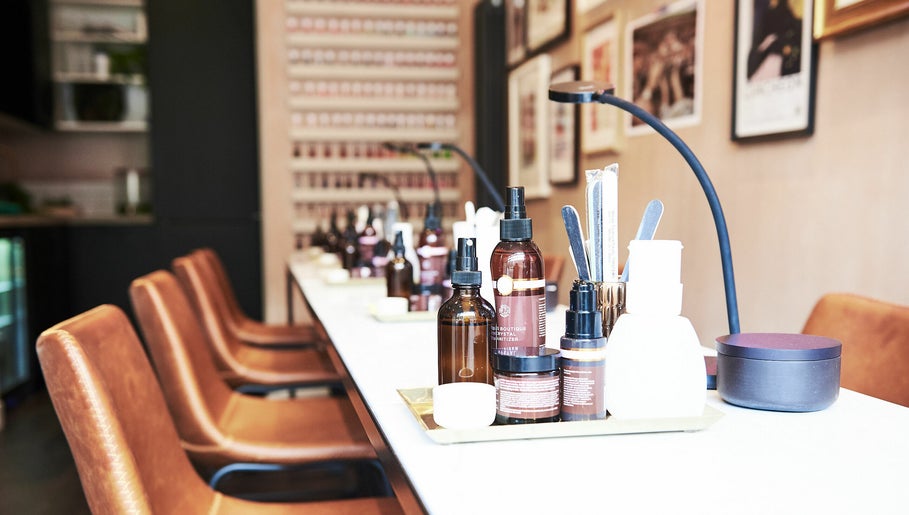


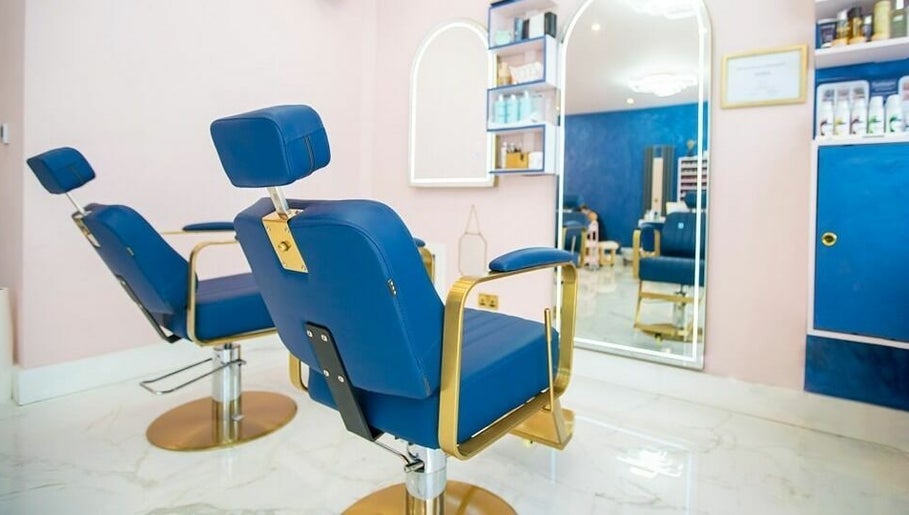
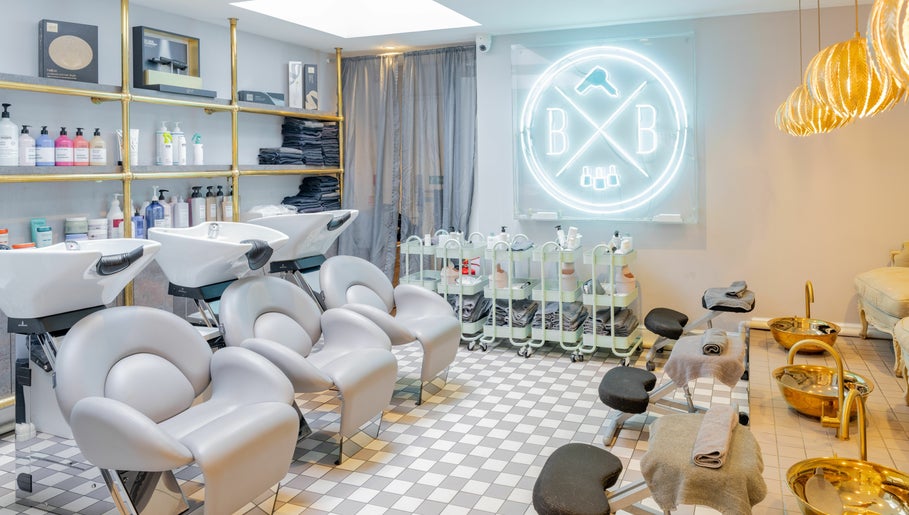
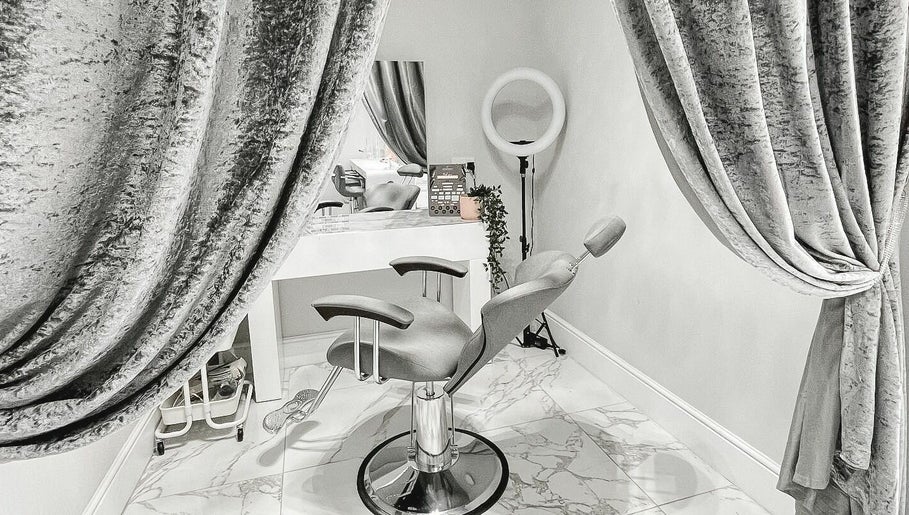

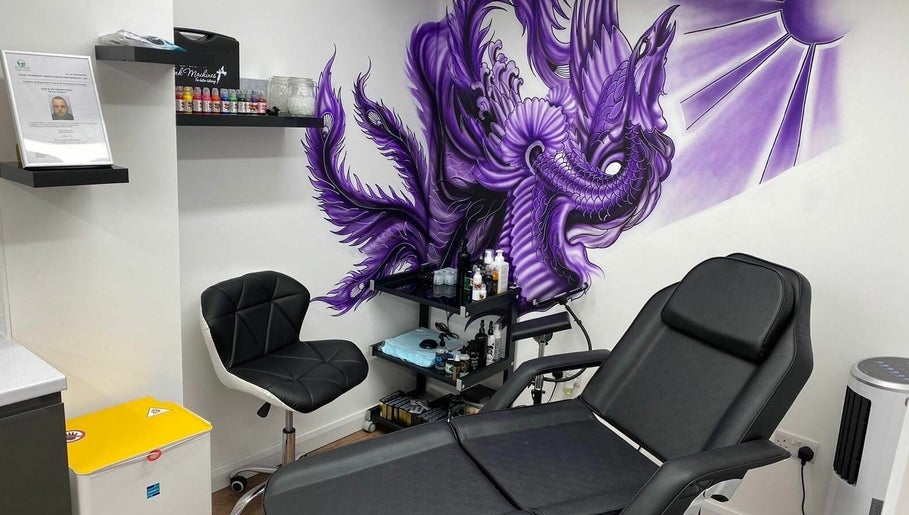
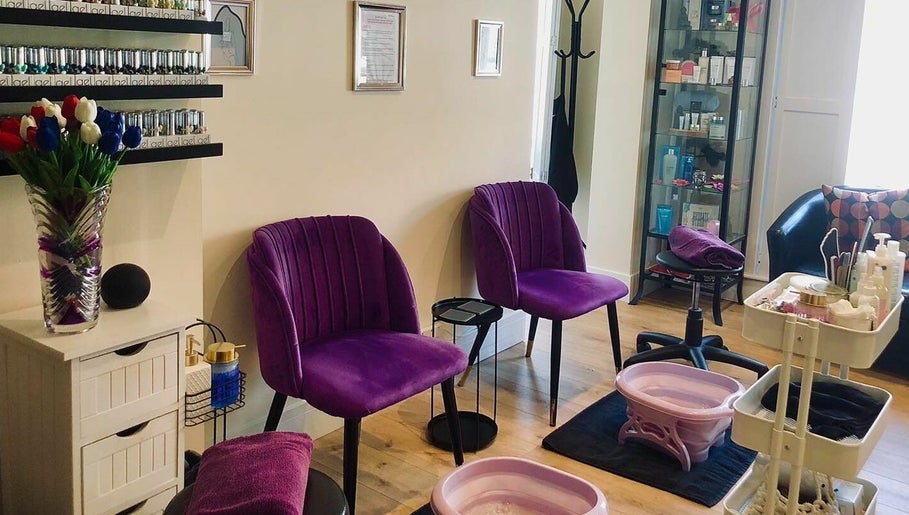


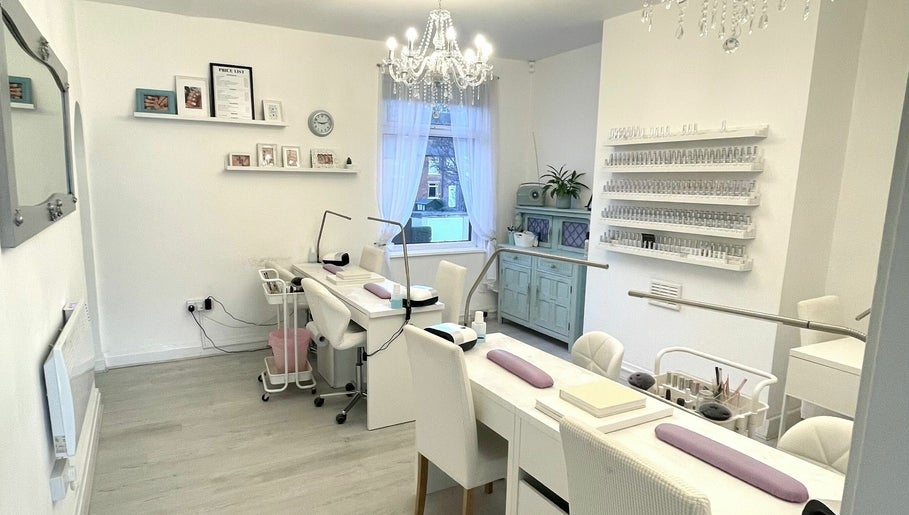



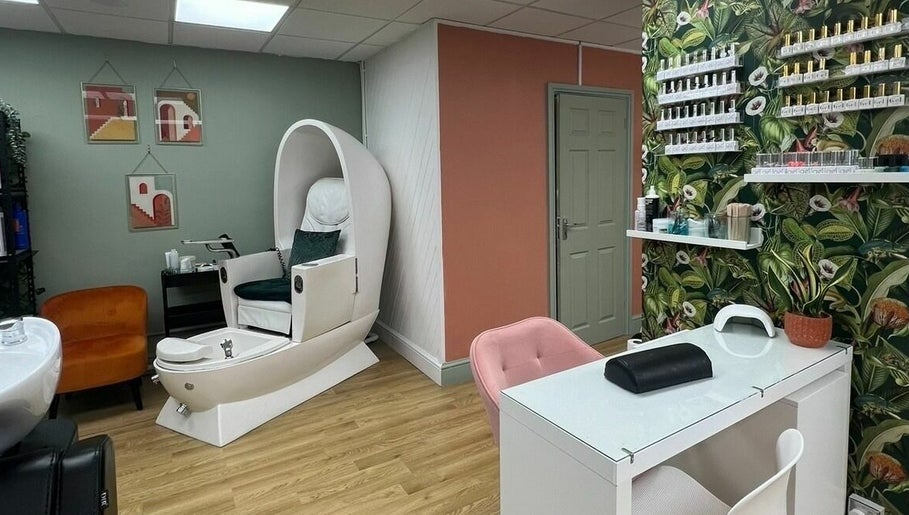
“Enter a world of relaxation, pampering, and fun! Our nail services, spa treatments, and more are perfect for unwinding or hanging out with friends. It’s simple. We are dedicated to providing a memorable experience for each and every guest through exceptio”